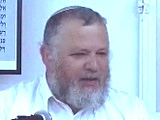- Sections
- Igrot Hare’aya
2445
Recipient: The rabbis of the Secretariat of "Mizrachi" of the Western Countries. They had many questions for Rav Kook about the state of education in Eretz Yisrael. The ones he answered, we present in numbered form, as he did.
Body: 1. Regarding yeshivot and other institutions in which Torah is learned, in Eretz Yisrael in general, there are so many that I cannot list them all. In general, the traditional program of education is the dominant one in the old institutions. This is an arrangement that has many advantages, although it is also not free of drawbacks, which there is a great necessity to fix. But at least with them, we are confident that they are raising Jews for us. When they remedy the drawbacks, their products will be Jews that will be the pride of the Holy Land, in the eyes of Am Yisrael and humanity.
The goal of the "Shomrei Torah" organization is to protect traditional Judaism, which is dedicated to the covenant and the Torah to the fullest extent. This is a reality that is continually shrinking in scope in Eretz Yisrael because of the new schools. These new schools, for the most part, want to establish a mindset of no more than a dry national identity, which negates even general belief in Hashem, not to speak of allegiance to a lifestyle that gives life to its adherents through the light of Hashem and the fulfillment of the mitzvot in truth and purity. To this point, Shomrei Torah has established some schools according to the old approach, and sometimes there is a little loosening and beautifying in comparison to the old school. This is done through the influence of wise people and the physical help of the wealthy who love the righteousness of Hashem and the statutes He gave Israel.
2 . The councils that oversee all of the schools that generally follow the old approach, consist of gabbaim and supervisors. Most schools have hired supervisors, and the schools that are officially part of Shomrei Torah are under the leadership of the organization, which is made up of especially pious people. Many of them are dedicated to this project, and they live in Yerushalayim.
3. The children in the moshavot (agricultural cooperatives) schools are children who live in the moshavot. Here (Yafo) and in Yerushalayim, there are some children in the schools from outside of Eretz Yisrael and from other cities. These schools also have a few students from Yemenite families and recent immigrants from Russia.
4. Most of the teachers are G-d-fearing and Torah-knowledgeable people from the older generation. There are some who have a certain level of secular knowledge, mainly from that which they accumulated by themselves. The school day is usually seven to eight hours a day.
5. To our great disappointment, we have not found any institution that teaches young women to lead a life of Torah and mitzvot along the lines of the traditional approach. The influence of the schools in which the young women learn is generally one in which the known weakening of the new schools in the realm of religion is a problem. This matter needs remedy without any delay.

The Limits of Free Thought
Igrot Hare’aya #20, p. 19-21 – part III
Beit Din Eretz Hemda - Gazit | Iyar 15 5781

Deflecting Criticism – #291
Date and Place: 12 Nisan 5670 (1910), Yafo
Beit Din Eretz Hemda - Gazit | Shevat 5785

Public Letter on Observance of Shemitta – #287 – part II
Date and Place: 4 Nisan 5670 (1910), Yafo
Beit Din Eretz Hemda - Gazit | Kislev 5785

Jewish Art – The Positive and Halachic Care
Igrot Hare’aya – Letters of Rav Kook: #158 – part IV
Beit Din Eretz Hemda - Gazit | Tammuz 5783

Beit Din Eretz Hemda - Gazit

Semi-solicited Advice to Calm Down Petach Tikva
#227 Date and Place: 8 Tishrei 5669, Yafo
19 Sivan 5784

Repercussions of a Sale that Turned Out Not Happening – part III
(based on ruling 83045 of the Eretz Hemdah-Gazit Rabbinical Courts)
18 Sivan 5784

Halachic Shmita Guide from Eretz Hemdah
Elul 8 5781

Raffle of Property in Eretz Yisrael for Tzedaka
Igrot Hare’aya – Letters of Rav Kook: – #220
18 Sivan 5784

A Woman's Obligation to Pray
Rabbi Eliezer Melamed | 5766

What Bracha Do I Make Before Smelling the Shavuos Flowers?
Rabbi Yirmiyohu Kaganoff | 5772

The Significance of “l’david Hashem Ori”
Rabbi Stewart Weiss | Elul 7 5780

Davening for Rain in the Southern Hemisphere
Part 2
Rabbi Yirmiyohu Kaganoff | Cheshvan 21 5779

Ask the Rabbi: Scratching Improperly Parked Cars
Rabbi Daniel Mann | Iyar 5785
Daf Yomi Makkot Daf 21
R' Eli Stefansky | 1 Iyar 5785







